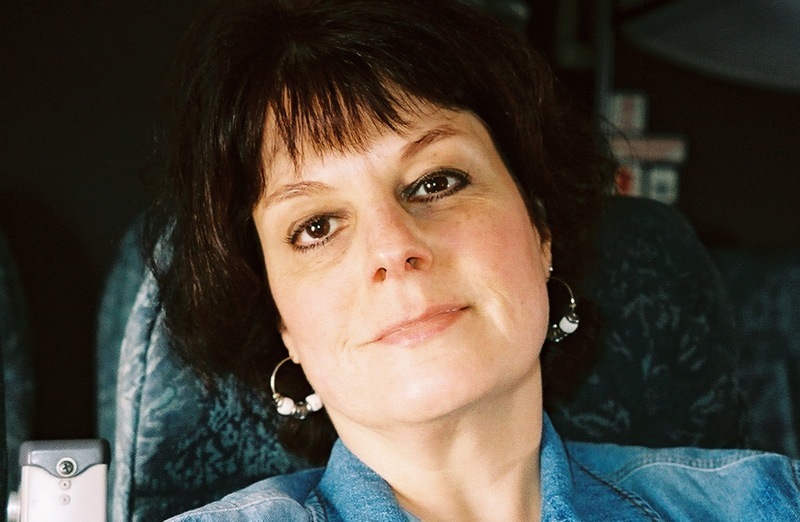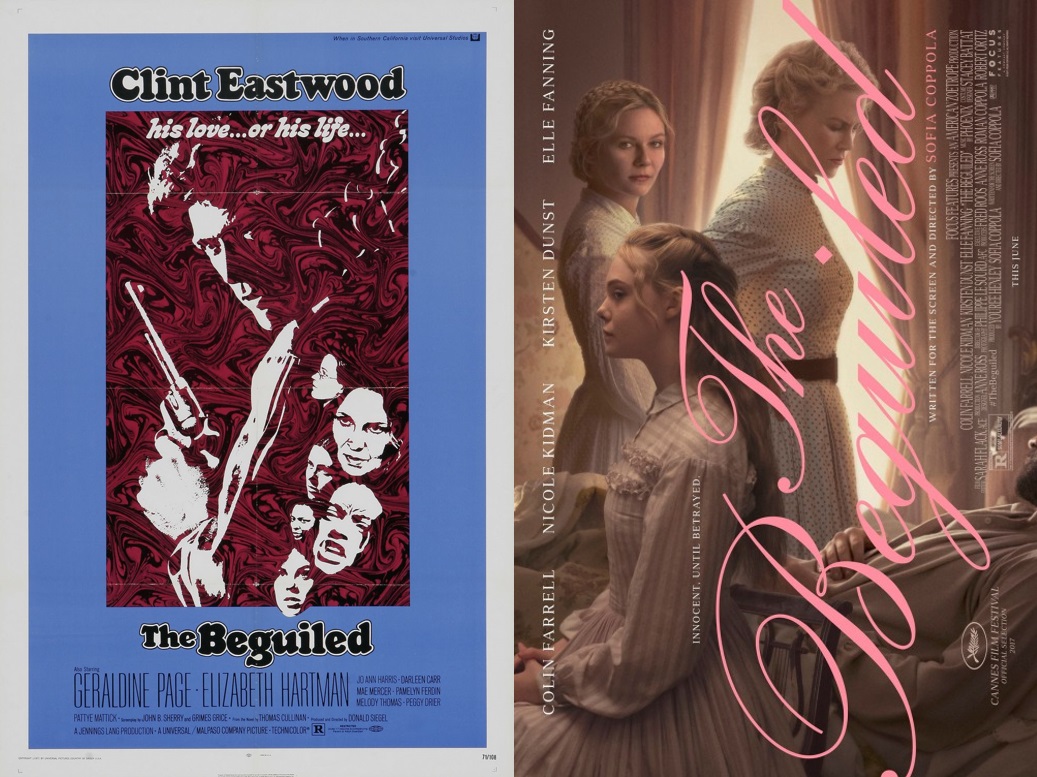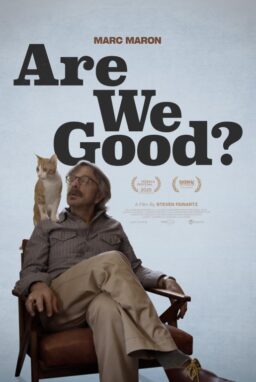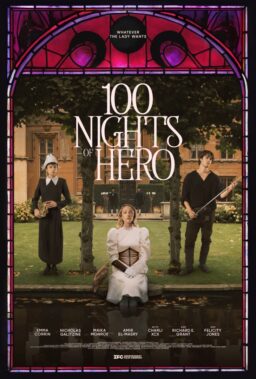What a difference a gender change makes.
When I first heard that Sofia Coppola was going to write and direct a feminist-infused revision of “The Beguiled,” I felt a sudden rush of emotions. Curiosity, excitement, anticipation—and trepidation.
That is because the original “The Beguiled,” based on a pulpy Southern gothic novel about an injured Yankee soldier held captive at an all-girls Confederate boarding school in Louisiana during the Civil War, was one of the seminal films of my impressionable youth. I managed to see the 1971 R-rated release, a flop during its theatrical run, when the drama found its way to TV later that decade with some of the juicier and more violent scenes edited.
I was initially drawn into the movie not because of its leading man, a pre-grizzled Clint Eastwood whose “Dirty Harry” later that same year and with the same director (Don Siegel) would take him to the next level as an action hero, but because of the ethereal presence of Elizabeth Hartman, an actress that I was crazy about after seeing her in two very diverse roles in “A Patch of Blue” and “You’re a Big Boy Now.” Her teacher, Edwina (played by Kirsten Dunst in the Coppola version), is the most relatable and sympathetic character on screen and has the most “normal” romantic relationship with the film’s only male character. But once I caught wind of the premise of “The Beguiled”—females in various states of arousal and jealousy over the presence of the handsome male prisoner in their midst—me and my incubating libido couldn’t stop watching.
Years had gone by since I thought about my first and only encounter with this overheated if highly watchable potboiler. But the arrival of a new “Beguiled” gave me permission to revisit it on DVD. Surprisingly, I found myself riveted by the opening credits, which I am sure I missed the first go-round: sepia-toned photos of soldiers in violent combat are shown while a military drumbeat is heard on the soundtrack. Those images dissolve and we see a barefoot young girl (Pamelyn Ferdin, a ubiquitous child actress at that time) with a basket slung on her arm, looking for all the world like Little Red Riding Hood as she plucks mushrooms along the way through the forest. Her Big Bad Wolf shows up soon enough in the form of Eastwood’s Union soldier, swooning from loss of blood. We learn he is Corp. John McBurney. He asks his savior, Amy, how old she is. “Twelve. Thirteen in September.” Replies McBurney, “Old enough for kisses,” and he helps himself to her lips.

Whoa, I did not see that coming. Needless to say, such underage liberties do not exist in Coppola’s opening scene, where Colin Farrell’s McBurney bonds with Oona Laurence’s Amy—whose brother died in battle—in a more sibling-like fashion. He isn’t initially in the same league as Eastwood’s wounded warrior when it comes to being a master manipulator, either. It takes him time to figure out each female’s soft spot to guarantee his safety and usefulness.
But what the 1971 intro establishes—partly thanks to the jittery rat-tat-tats provided by Lalo Schifrin (creator of the “Mission: Impossible” theme) and the gun-powder-hazy visuals amid Spanish moss by ace cinematographer Bruce Surtees—is a world in chaos, where normal societal rules don’t necessarily apply. With cannon fire within earshot, the girls go through the motions of learning French and proper manners. When Amy finally drags the half-dead McBurney to the school, one of the older students fears the enemy soldier might “rape every one of us.” That threat will be alluded to again in the form of other potential male attackers who pass by outside the school’s gates and come knocking on the door in the dark. Meanwhile, spinsterish head mistress Martha (Geraldine Page) is heard thinking as she gazes upon the wounded man, “If this war goes on much longer, I’ll forget I was a woman.”
Compare the 1971 intro to the 2017 one. Gone, at least initially, are the rhythmic echoes of war. Instead, Coppola brings us through a pastoral tunnel of gracefully bowing trees with similar veils of Spanish moss seen through a foggy mist, and the sound we hear is Amy happily humming a tune as she picks her mushrooms. The effect is more of a reverie until she stumbles upon reality in the form of a wounded soldier. She tells him, “I’m frightened. Are you frightened?“ He responds, “No,” but then adds, “Yes, so am I.” He seems to be not as badly hurt as Eastwood’s so-called “blue belly” and we learn he is a deserter and a mercenary who hails from Dublin.

As befits the decade when it was released, there is a war going on not just between the states, but also between the sexes in Siegel’s take on this tale. His “Beguiled” is often dismissed as misogynistic in its portrayal of women as vindictive harpies preying upon a helpless soldier who refuses to sit back and simply fulfill all their wartime-repressed desires, especially when seen through 21st century eyes. There definitely is an unsavory catfight quality to the vying-for-attention goings-on—at one point, a jealous Edwina exchanges words with the most flirtatious of her charges and declares her to be a “hussy”—that hangs over the proceedings like overripe, near-rotting fruit that I actually rather appreciate given the unhealthy lust-ridden atmosphere.
But one must also consider what was going on during the early ‘70s. There was a call for the passage of an Equal Rights Amendment to level the playing field for women, especially in the workplace. The constitutional right to abortion was also hotly debated, eventually being upheld by the Supreme Court’s decision over Roe v. Wade in 1973. The increased availability of birth control methods for women, especially the pill, opened the door for more sexual freedom. Heck, women folk even had their brand of cigarettes marketed just to them (Virginia Slims) with the slogan: “You’ve come a long way, baby.” It was Eastwood’s idea to adapt the 1966 novel with Siegel as his director, who would describe the film’s driving theme as being “the basic desire of women to castrate men.” One of the reasons that this “Beguiled” underwhelmed at the box office was that probably no male Clint fan wanted to see such a macho leading man become the victim in what amounts to a horror movie during an era when they themselves might have felt threatened by the rise of feminism.
The Siegel screenplay did involve female input. It was co-written by Albert Maltz (Eastwood and Siegel’s “Two Mules for Sister Sara”) and Irene Kamp. They both chose to use pseudonyms after their happy ending was changed to a grislier conclusion, one that remains pretty much intact in Coppola’s script. But instead of the sense that these complicit female participants in a gruesome act are forever altered and not for the better, there is a deeper connection in the new film between the students and the adults in charge—a feeling of restored sisterhood that was rudely disrupted by a predatory male intruder.

There are many other changes afoot in the current “Beguiled,” including cutting the number of students down from six to five (not a bad choice, since at least two of the younger girls in the Eastwood version simply blend together). There are some rather kinky aspects to the 1971 narrative, mostly centered around Martha’s flashbacks of her incestuous relationship with her runaway brother and a wine-induced dream in which she finds herself in bed with both McBurney and Edwina. By contrast, Nicole Kidman’s Martha is most affected by McBurney’s presence when she initially washes him with a sponge bath after sewing up his injuries. Such intimate contact with manly flesh brings a full flush to her face.
Also, there is one line from the Eastwood film that I sorely missed in Coppola’s more fashion-forward version of “The Beguiled,” whose choice of girly pink-hued script for the opening-credits title sets the tone. She shares Wes Anderson’s fetish-like obsession to just-so costumes. As usual, the outfits here are meticulously sewn and fit like bespoke tailoring. As a result, the primly alluring designs by Stacy Battat (“The Bling Ring,” “Somewhere”) act like emotionally charged character-defining signifiers. Meanwhile, the wardrobe worn by the ladies in the Siegel original would never be called runway-ready or even memorable.

That leads to a change in a telling piece of dialogue spoken by Martha that says much about the different moods of each film. In 1971, Page remarks with earthy coyness on how McBurney’s arrival has had a positive effect on their food supply: “The hens finally laid some eggs.” In 2017, Martha instead notices an upgrade in the clothing and accessories being worn by the girls the morning after McBurney’s arrival. She declares Edwina to be “tres jolie” before adding, “It seems like the soldier being here is having an effect.”
I prefer Siegel’s take on the material over Coppola’s tasteful and formal rendering from a female perspective. I am quite fond of Eastwood vehicles that put women front and center, including “Play Misty for Me,” “Bronco Billy,” “The Bridges of Madison County” and “Million Dollar Baby.” But I was mostly on board with the changes Coppola made—especially Kidman’s mordantly funny delivery of the line, “Bring me the anatomy book,” which is heard in both versions. (I don’t think I laughed at anything in the original even if it tumbles into campy terrain now and then.) But there are two switcheroos in the new “Beguiled” that gave me pause.
One, there is an adult female slave both in the novel and the 1971 movie named Hallie, played by actress Mae Mercer in the film, who lends a grounded common-sense point of view to what is going on. She, for one, isn’t as enamored of this Yankee gentleman caller. McBurney tries to connect with her by noting, “We both are kind of prisoners here.” She counters, “I can run.” She, too, eventually warms up to him even if she is onto his con game, but he is quick to show his true ugly colors to her when circumstances grow dire for him.

Coppola has said in interviews that she didn’t want to treat the important topic of slavery as a side issue (in this day and age, whatever way she handled it would probably ignite a critical backlash) and instead wanted to tighten her focus on these seven females who are cut off from the world and surviving on their own without men. There is a line added that explains that the slaves have run away. But that leaves the girls and their teachers to have to do all the chores both outside with gardening and livestock and inside with cooking, dusting, laundry and darning. One wonders when the students find the time to study since the plantation house and grounds are pretty well kept up. Yes, Farrell’s character chips in on the chores when he feels up to it, but that even seems a bit much because the guy mostly just wants to heal and escape in between being everyone’s boy toy.
Then there is the scene that amounts to Coppola’s take on The Last Supper. I gave a pass to the Sunday-best sort of clothes that his keepers wear to impress McBurney, which are somehow crisp and wrinkle-free in such humidity. But then Coppola has the seven females don satin ball gowns with perfectly braided hair and fancy ribbons while serving a sumptuous Michelin-star worthy feast to the soldier on fancy china and crystal. Weirdly, we get to witness one of the younger students don a corset Scarlett O’Hara-style when she clearly doesn’t need one. Perhaps, by this time, the director can get away with such a fantasy sequence that feels like a War Between the States-themed prom. But it took me out of the movie just as it was reaching its dramatically chilling zenith.
It is true that Eastwood dominates the first “Beguiled” more than Farrell does in his, and that is just what Coppola intended. But that also somewhat lowers the stakes, since clearly his McBurney is out of his league in terms of control over the situation compared to Eastwood’s, who up until the very end is mostly calling the shots. Perhaps if I had seen Coppola’s “Beguiled” before Siegel’s, I might have cotton to it more. It does show she can handle genre-specific, tightly plotted material, even if it maintains a certain decorum. And she certainly deserves her Cannes directing prize. But you can never forget your first time, and sometimes a redo just won’t do.












